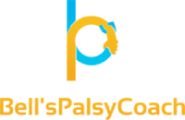Is Bell’s palsy related to cerebral palsy? What is palsy? Is it treatable and avoidable? Does bell’s or cerebral palsy comes back once it is treated?
You will find all these answers in this article.
In 2019, I was diagnosed with bells’ palsy. Without wasting a single second thinking ‘why’, I started working on how it can be treated. Through my experience, I helped a lot of people but some of them confused bell’s palsy with cerebral palsy.
What is palsy? It is the weakness or issues with the muscles. When it comes to bell’s palsy, the seventh cranial nerve is affected. The cerebral palsy is the weakness in the cerebrum in the brain. One is the inflammation of the seventh and twelfth cranial nerve in the face and the other is the inability to balance the body or mobility issues.
What is Bell’s palsy?
Bell’s palsy is the inflammation in the seventh and twelfth cranial nerve of the face. It leads to drooping on one side of the face. Many of the victims have had a history of bell’s palsy in their genetic history. But some of them have health issues like diabetes and infection in the upper respiratory system.
- Physiology
It is also known as acute peripheral palsy where there is swelling in the cranial nerves that hold the face from drooping. It occurs when there is infra neutron or low motor neutron paralysis.
- Areas affected
The eye and the drooping face are the most noticeable features that are affected. There is pain and discomfort on one side of the face.
- Progression
The onset time is less than 72 hours for the bells palsy. The problem starts with drooping face and goes on to the inability of the eye to close properly.
- Diagnosis
The eye starts to dry off because of its inability to close. A CT scan can help in determining the cause of the bells palsy and not the palsy itself. Electromyography is another way to diagnose bell’s palsy. It can also help determine the severity of the nerve inflammation.
What is cerebral palsy?
Cerebral palsy is the weakness in the part of the brain that controls the muscles. It includes inability to move muscles, balance the body and move without falling down. Sometimes, it can occur inside the womb or in the early ages of life due to an accident. The latter one is termed as ‘acquired’ cerebral palsy and the former is called congenital.
- Physiology
There is limitation in the movement of the muscles. There might occur slouching while sitting. One of the main reasons for cerebral palsy is the cut-off oxygen to the brain while the fetus is in the womb. Another reason is a bleeding in the brain before or after the birth.
- Areas affected
The cerebrum of the brain is the only area affected. But it leads to different areas like the neurodegenerative disorders, inability to balance body or talk properly.
- Progression
This is a non-progressive disorder which is followed by other neuro-developmental disorders.
- Diagnosis
There are brain imaging tests and genetic testing as well as metabolic testing. The brain imaging includes CT scan and magnetic resonance imaging (MRI). Electroencephalography can also be done for diagnosis of cerebral palsy.
Difference between bells and cerebral palsy
Although the word palsy makes them appear the same, but Bell’s palsy and cerebral palsy are different. One affects the cranial nerves of the face while the other is the weakness in the cerebrum of the brain. Both of these affect the body causing inability in the muscle movement.
There are three types of cerebral palsy and only one type of Bell’s palsy. The former’s types are spasticity, dyskinesia and ataxia. The spasticity causes stiffness in the muscles because there is more muscle tone. It may affect the legs, one side of the body or all four limbs including the trunk and the face.
The ataxia cerebral palsy causes inability to balance or coordinate the body. The dyskinesia is another type of cerebral palsy. People with dyskinesia CP have difficulty controlling their arms, fingers, feet and legs. The common type of cerebral palsy is Spasticity. Bell’s palsy is said to be occurring in people who are getting vaccinated. The study is still going on to determine the reason behind this.
Treatment
There is no treatment for cerebral palsy. However, there are intervention programs that help the child and family reach a result where they are capable of using their organs to full potentiality. Medicines, surgery, braces, and therapies including speech, physical and occupational are also provided.
On the other hand, bell’s palsy is treatable through medications, surgery and exercises. Since there is inflammation in the seventh and twelfth cranial nerves, it can reduced and slowly moved to zero. The treatment depends on the severity of the swelling.
A Final Verdict
Bell’s palsy is not related to cerebral palsy. There is a major difference between the two and that is no cure for the latter but there is for the former. If you or someone you know is suffering from bell’s palsy, consult a doctor first and you can get well sooner than expected.



Pingback: Most commonly asked questions about Bell’s palsy - Bells Palsy Coach